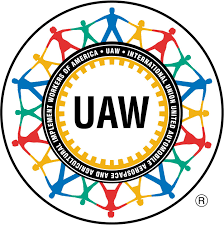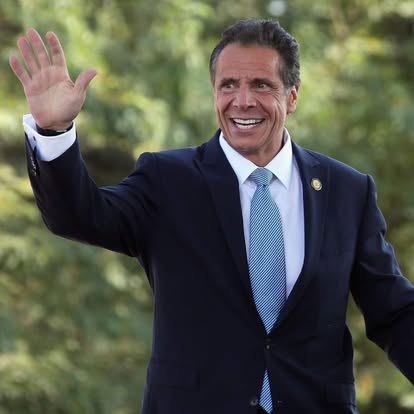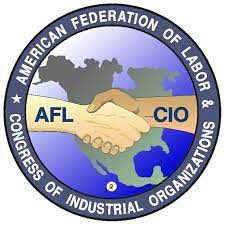New York, NY – Vincent Alu is Business Manager LiUNA Local 66. His interest in what was to become his career came early, as his mother and grandmother were both union members. During his apprenticeship, he says that he learned a crucial aspect of being in a union: “how to accept being a part of something bigger than my own self survival.” Learning the length and breadth of the benefits of union membership spurred him on to become the leader he is today.
LaborPress found out more about how his knowledge developed, and what led him to be a part of the multi-million-dollar projects with which the Local has been involved.
LP: Do you come from a union family, or did you know any workers in unions growing up?
VA: My mother was a union nurse and her mother a union seamstress. I knew plenty of guys in construction when I was growing up who had pathways into unions but always felt you had to know someone to get in.
LP: What inspired you to begin your path into this career field?
VA: My inspiration to build came when I was a kid, hanging with my grandfather and watching him know and use tools.
LP: What were some of the things you learned in your apprenticeship?
VA: I learned a lot in my apprenticeship. Although I had a pretty solid skill set coming in, I had to learn about safety and some of the more specific skills like scaffold building and confined space entry. Not counting of course how to accept being a part of something bigger than my own self survival. Learning I was part of an organization that had the same goals and values as I do was the most eye-opening thing.
LP: What stands out to you most in your time as a shop steward?
VA: The most valuable things that stand out the most during my time as union steward are the ability to represent other hard-working laborers, knowing I had the full support of a powerful organization behind me, and that by enforcing our contract I was going to help a fellow member work and pay his bills.
LP: Can you share some of the outstanding examples of the construction infrastructure and facilities accomplished by Local 66? What do you think has kept the union in the forefront of leadership in the over 80 years they have represented workers?
VA: For over 80 years Local 66 has been a significant part of every hospital, train station, airport and most mall projects. Amongst many others like the new UBS arena. Currently we are part of the redevelopment of the Belmont grandstand PLA, a $550 million dollar project. Local 66 has historically been the tip of the spear with enforcing union contracts because we have the broadest jurisdiction of work to defend. Couple that with a world class ANSI certified training curriculum and political activism structure to support our organizing efforts.
LP: Please explain for our readers what the Greater New York LECET does, and what it stands for.
VA: LECET is the Laborers Union Labor/Management division. LECET stands for Laborers and Employers Cooperation and Education Trust. LECET is tasked with finding and developing opportunities for our contractors to bid on competitively. The tools and strategies include prevailing wage compliance, legislation and client relations to name a few.
LP: You had many roles such as Organizer, Instructor and Labor Management Field Representative with LECET. Can you share some of how you feel your leadership qualities helped you in each one, and what those qualities, in your estimation, are?
VA: The key quality in any of the roles and offices I’ve held with the Laborers Union is confidence. Confidence in my abilities and skills, confidence in the organizational vision and confidence in the strategy and techniques needed to be successful. The people around us know who can walk the walk and those who just talk.
LP: What are the prime examples of what OSHA 30 brings to the building codes?
VA: Construction is a very dangerous occupation and OSHA is tasked with workplace safety in all industries. Some numbers for reference: OSHA has roughly 2,000 compliance officers covering 130 million workers at roughly 8 million workplaces. It historically translates to 1 OSHA compliance officer for every 77,000 American workers. OSHA as an agency can never cover every workplace in the country but what they have done is build out a framework of standards in the Code of Federal Regulations that guide employers but more importantly the workers on how to get through their work days as safe as possible. From there it’s on us to develop cultures of safety at work.
LP: How did the SUNY Project Labor Agreement benefit workers?
VA: For years unscrupulous contractors have pirated projects away from legitimate contractors with tools like wage theft and insurance fraud. Prevailing wage is a tough law to enforce without an active Department of Labor policing sites so our best remedy is Project Labor Agreements. PLAs set jurisdiction and processes from square one and require contractors to use workers from our union halls guaranteeing our members are on the sites.
LP: What are the most important aspects of Workforce Development in your estimation?
VA: Workforce Development is amongst the most important and focused areas in our industry. Creating pathways for individuals to be able to access, participate and contribute to our middle- class careers and organizations. In addition, there are great cost saving potentials with the utilization of apprentices.
Alu has been part of Local 66s’ important projects, and he has brought his know-how and dedication for many years to the Union.
For his work on behalf of Labor, and for his help representing those who need it the most, the members of his Union, LaborPress is proud to award Vincent Alu Business Manager LiUNA Local 66 its 2024 Labor Leadership Award.






